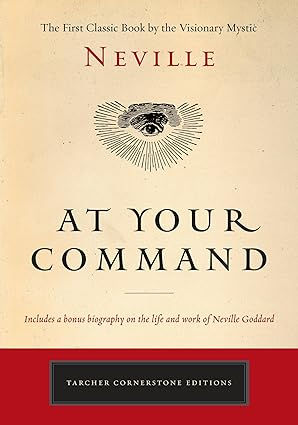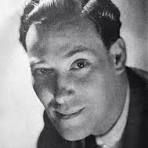At Your Command
- Steve Freier

- Jun 3
- 4 min read
by Neville Goddard

At Your Command is one of the earliest and most concise works by mystic and spiritual teacher Neville Goddard, originally published in 1939. In this powerful yet compact book, Goddard distills his core teachings on the creative power of human imagination and the nature of God within the individual. The essence of the book revolves around the idea that each person possesses within themselves the ability to shape their reality by assuming the feeling of their desired state and living from the conviction that it is already fulfilled.
Central Theme: God is Your I AM
The book begins by asserting a radical and empowering idea: God is not some distant, external deity, but is instead the “I AM” presence within each individual. When a person says “I am,” they are declaring the presence of God within themselves. This inner awareness of being is the only true creative power. According to Goddard, everything a person experiences in the external world is a direct manifestation of their internal beliefs, thoughts, and feelings. The state of consciousness in which one dwells determines the world one encounters.
This foundational idea echoes the Biblical declaration in Exodus 3:14, where God says to Moses, “I AM THAT I AM.” Goddard interprets this to mean that the divine presence is consciousness itself—our own awareness of being. When we say “I am,” we are using the name of God, and whatever follows that declaration becomes our reality.
Assumption Creates Reality
A central practical teaching in At Your Command is the law of assumption. Goddard insists that assuming the

feeling of the wish fulfilled—living and thinking as though the desired state is already true—is the key to manifestation. This is not merely wishing or hoping, but embodying the reality of the thing hoped for. When one persists in this assumption with conviction and faith, the external world rearranges itself to reflect this inner change.
For example, if someone wants to experience wealth, they must first assume the feeling of being wealthy. They must feel it, live it inwardly, and walk in that mental state as if it were already true. In doing so, the outer conditions eventually conform to this inner reality. Goddard repeatedly stresses that feeling is the secret. Mere intellectual affirmation is not enough—it must be felt and believed at a deep level.
The Power of Awareness
The book emphasizes the importance of awareness and self-observation. Goddard teaches that every individual is constantly creating their life through the thoughts and beliefs they hold. Whether they realize it or not, people are always living out the assumptions they accept as true. Therefore, becoming aware of one’s inner dialogue and dominant mental states is critical.
Goddard urges the reader to turn away from appearances and reject any sense of limitation or lack. Instead of accepting external conditions as immutable facts, one should reinterpret them through the lens of their inner convictions. “Do not question how it will happen,” he advises. “The how is the job of the subconscious or God within you. Your job is to claim it and assume it now.”
The Creative Act: Mental Rehearsal
Visualization and mental rehearsal play a significant role in Goddard’s method. By vividly imagining the outcome one desires—and feeling it as if it were already real—a person performs a creative act that sets in motion the forces needed for its realization. Goddard sees imagination not as idle fantasy but as the very instrument of creation.
He likens this process to sowing a seed in the ground. Once the seed (the assumed state) is planted in the subconscious mind through belief and feeling, it begins to grow and manifest in the physical world. Just as one would not dig up a seed daily to check on its progress, so too should one persist in their assumption without doubt or anxiety.
Responsibility and Faith
At Your Command also emphasizes personal responsibility. Since all that happens in life originates in one’s own consciousness, there is no room for blame. Goddard teaches that we are the operant power—meaning we are not subject to fate or the will of others but are fully in charge of our life experience.
Faith, in Goddard’s view, is not blind trust in an external deity, but the inner certainty that one’s assumptions will harden into fact. He distinguishes between belief and faith: belief is acceptance based on external evidence, while faith is an inward knowing that transcends appearances. When one operates from this faith, miracles become natural outcomes.
Biblical Interpretation
Throughout the book, Goddard offers metaphysical interpretations of the Bible. He contends that the stories of Scripture are not historical events, but psychological dramas playing out within every individual. Characters and events represent states of consciousness, and the entire Bible is a coded guide to understanding the spiritual laws of the self.
For example, he interprets Jesus Christ not as an external savior but as the symbol of awakened imagination—the divine creative power within every person. The death and resurrection of Christ symbolize the transformation of self through the assumption of new states of consciousness.
Conclusion
At Your Command is a bold, empowering manifesto on the power of human cons sciousness and imagination. Neville Goddard’s message is clear: you are the creator of your reality. By understanding that your awareness of being is God, and by deliberately assuming the feeling of your wish fulfilled, you can reshape your life and circumstances.
This short yet potent book invites readers to take full ownership of their lives and to recognize that nothing is impossible. All things are indeed “at your command” when you understand and apply the principle that “I AM” is the only power and presence that creates.
The book, At Your Command, is available in paperback or kindle version Here on Amazon.




Comments